This dream hits reality fast when your video call drops or your laptop dies. Digital nomads face the challenge of finding destinations that offer both incredible van life experiences and the infrastructure needed for productive remote work.
You want adventure, but you also need reliable wifi connectivity and power to keep your income flowing.
Most van life guides ignore the work part. They show pretty photos but skip the details about internet speeds, coworking spaces, and whether you can charge your laptop. This guide is different.
Stop choosing between your career and your dreams. These destinations prove you can have both if you pick the right places and plan properly.
15 Best Van Life Destinations for Digital Nomads in 2025
A Perfect Van Life Destination for Digital Nomads

You’re tired of having to choose between your career and your dreams. You want both the freedom of van life and the ability to keep your remote job. However, not every beautiful spot is suitable for digital nomad van camping.
i. Your internet needs to work
You need at least 25 Mbps for video calls. That pretty lake with zero cell service? Save it for weekends. Your client won’t care how stunning your backdrop is if you drop their call.
ii. Backup plans matter
The best destinations have coworking spaces within 30 minutes of van-friendly areas. Coffee shops with fast wifi work too. When your van’s internet fails (and it will), you need options.
iii. Your van needs support
Look for places with dump stations, water fills, and safe overnight parking. Walmart parking lots aren’t glamorous, but they’re often more reliable than remote boondocking spots when you have morning meetings.
iv. Money adds up fast
A $50-per-night campground becomes $1,500 per month. Factor in gas, food, and internet costs. Some expensive areas offer free wifi and amenities that save money.
Top 5 U.S. Van Life Destinations for Digital Nomads
You want to work from somewhere that doesn’t feel like work. These five spots give you fast internet, van-friendly infrastructure, and communities that suit your lifestyle. Here’s where remote work van life spots work.
i. Austin, Texas Area

Your laptop stays cool while you stay inspired. Austin’s tech scene created a city that understands remote workers.
South by Southwest isn’t just a festival. It built a year-round culture of coworking spaces and fast internet throughout the city. You’ll find gigabit speeds in most coffee shops.
Van camping: McKinney Falls State Park sits 13 miles southeast of downtown. Electric hookups available for $25/night. Pace Bend Park on Lake Travis offers primitive camping for $15/night with decent cell coverage.
Workspaces: WeWork locations downtown offer day passes for $29. Radio Coffee on Barton Springs Road has consistently fast wifi and welcomes laptop workers. Local coffee shop speeds average 50+ Mbps.
Costs: Budget $800-1,200 monthly. Camping runs $15-25/night. Food trucks keep meals under $10. Gas is typically 10-15 cents below the national average.
Community: Austin Digital Nomads Facebook group has 3,000+ active members. Monthly meetups happen at various coworking spaces. The group shares van parking tips and wifi speed tests.
Best time: March-May and September-November. Summer hits 100°F+ with high humidity. Winter stays mild but can get surprisingly cold.
ii. San Diego, California
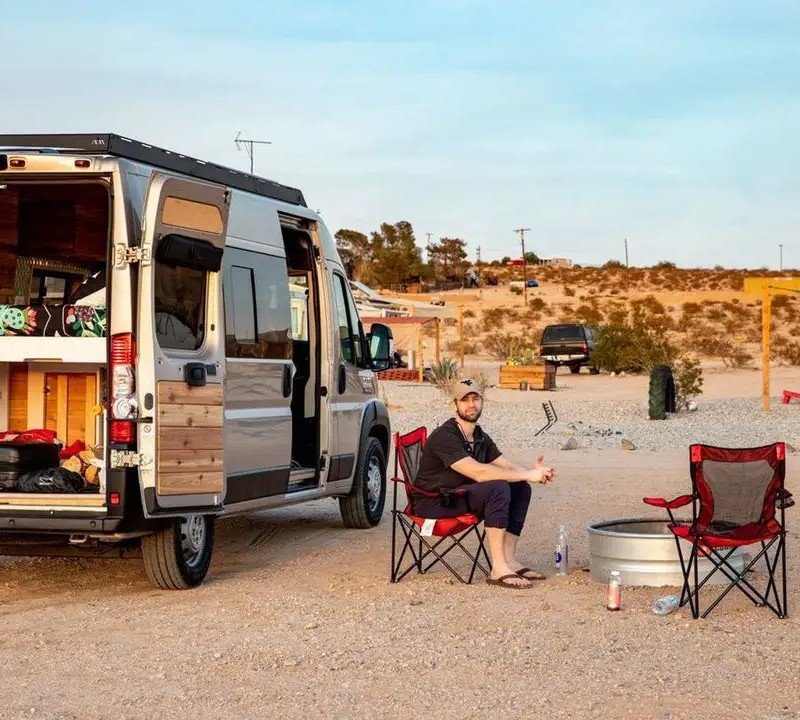
Great weather costs extra, but your productivity might be worth it. Year-round 70°F temperatures mean your van’s ventilation system won’t work overtime.
The biotech and software industries built serious internet infrastructure. Most areas get 100+ Mbps speeds. Beach proximity keeps stress levels manageable.
Van camping: San Elijo State Beach allows overnight RV parking for $50/night with partial hookups. Santee Lakes offers full hookups for $45/night, 25 minutes from downtown. Some Walmart locations still allow overnight parking.
Workspaces: Regus downtown offers day passes for $35. Better Buzz Coffee locations have fast wifi and laptop-friendly hours. The UC San Diego area has multiple 24-hour study spots.
Costs: Plan for $1,500-2,000 monthly. Camping is expensive at $40-50/night. Groceries cost 15-20% above the national average. Gas adds another $0.30+ per gallon.
Community: The San Diego Digital Nomads Meetup group organizes weekly events. Many tech workers live the van life part-time here. Strong community support for alternative lifestyles.
Best time: Year-round works, but September-November offers fewer crowds and lower accommodation costs.
iii. Moab, Utah
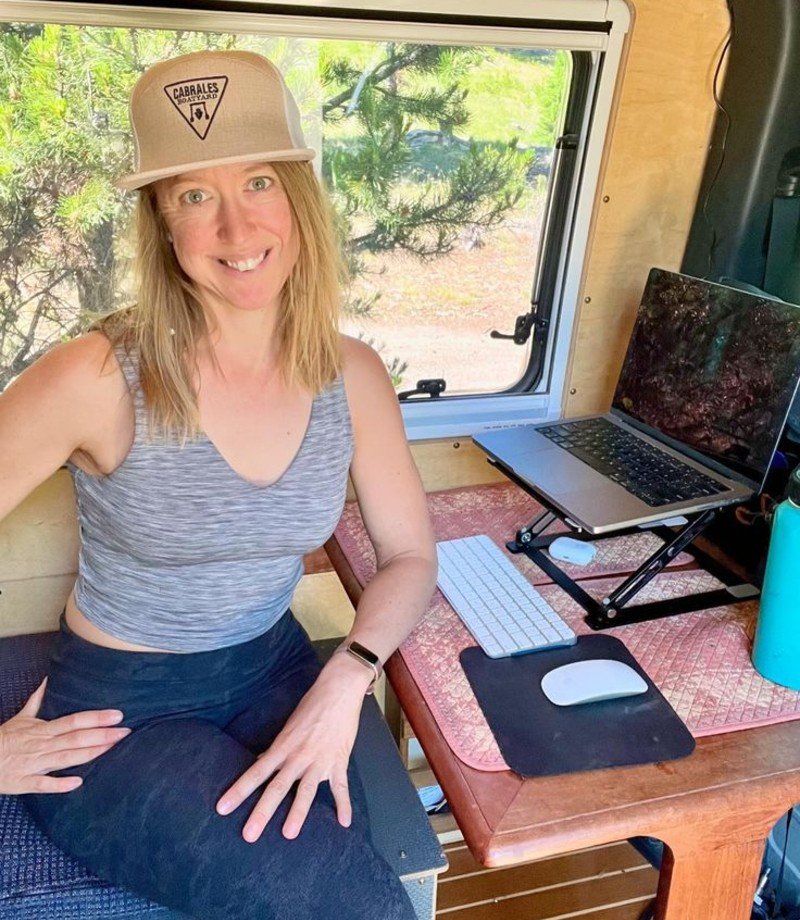
Red rocks meet reliable internet. This outdoor paradise surprised everyone by becoming a remote work hub.
Starlink coverage is excellent throughout the area. The town upgraded its internet infrastructure as tourism grew. Most cafes offer 25+ Mbps speeds.
Van camping: Dead Horse Point State Park allows self-contained RVs for $30/night with stunning views. Moab Rim Campground offers full hookups for $35/night in town. BLM dispersed camping is free, but check current regulations.
Workspaces: Moab Coffee Roasters downtown has reliable wifi and quiet corners. Moab Information Center offers free wifi during business hours. Some visitors rent Airbnb spaces just for reliable internet access.
Costs: Budget $600-900 monthly. Free BLM camping balances higher food costs. Limited grocery options mean 20-30% higher food expenses. Gas stations are limited but competitive.
Community: The Moab area has a growing remote worker population. Facebook groups share internet speed reports and camping availability updates. Weekly informal meetups happen at local coffee shops.
Best time: April-May and September-October. Summer temperatures exceed 100°F. Winter can close some camping areas, and internet service gets spotty in storms.
iv. Asheville, North Carolina
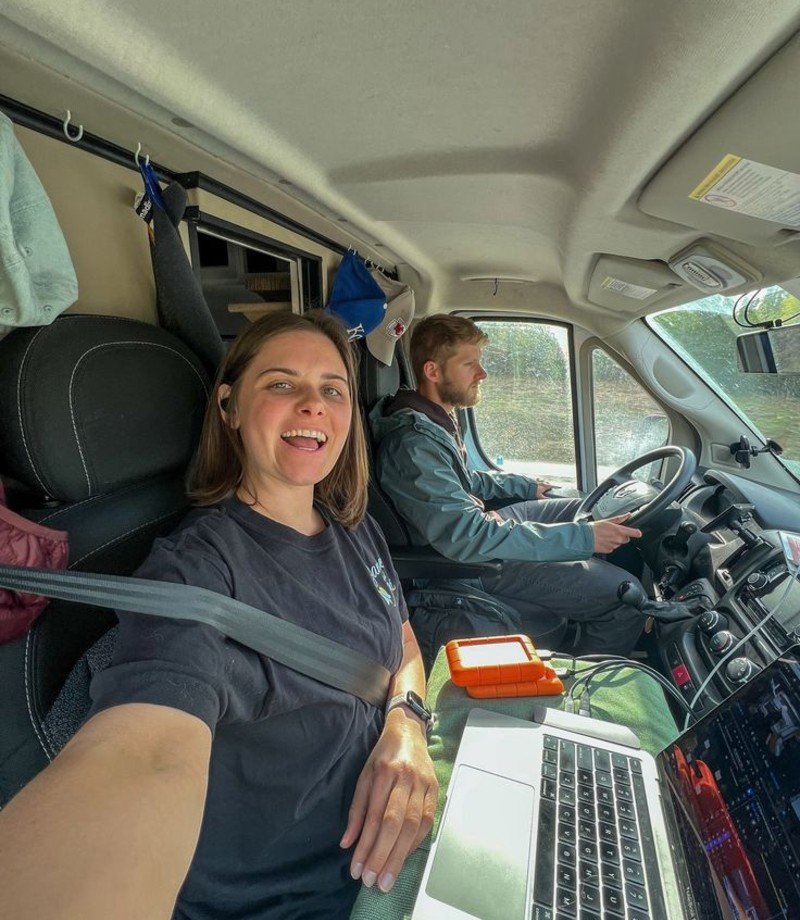
Mountain views with metropolitan internet speeds. The Blue Ridge Mountains hide a tech-friendly city that welcomes van lifers.
Asheville’s tech scene built fiber networks throughout the city. Mountain geography doesn’t hurt internet quality like in other rural areas. The city actively supports remote workers.
Van camping: French Broad River Campground offers sites for $35/night with full hookups, 15 minutes from downtown. Blue Ridge Parkway has multiple campgrounds but limited hookups. Some dispersed camping is available in Pisgah National Forest.
Workspaces: Pack Memorial Library downtown offers free high-speed wifi and quiet work areas. Highland Brewing Company has excellent wifi and laptop-friendly spaces. Multiple coworking spaces offer day passes for $20-25.
Costs: Plan for $700-1,100 monthly. Camping averages $25-35/night. Food costs stay close to the national average. The craft beer scene offers good value for entertainment.
Community: Asheville Remote Workers group meets monthly. Strong van life presence due to outdoor recreation opportunities. Local businesses generally welcome van lifers who spend money.
Best time: April-June and September-November. Summer humidity can be intense. Winter mountain weather sometimes affects internet and road access.
v. Denver, Colorado Area
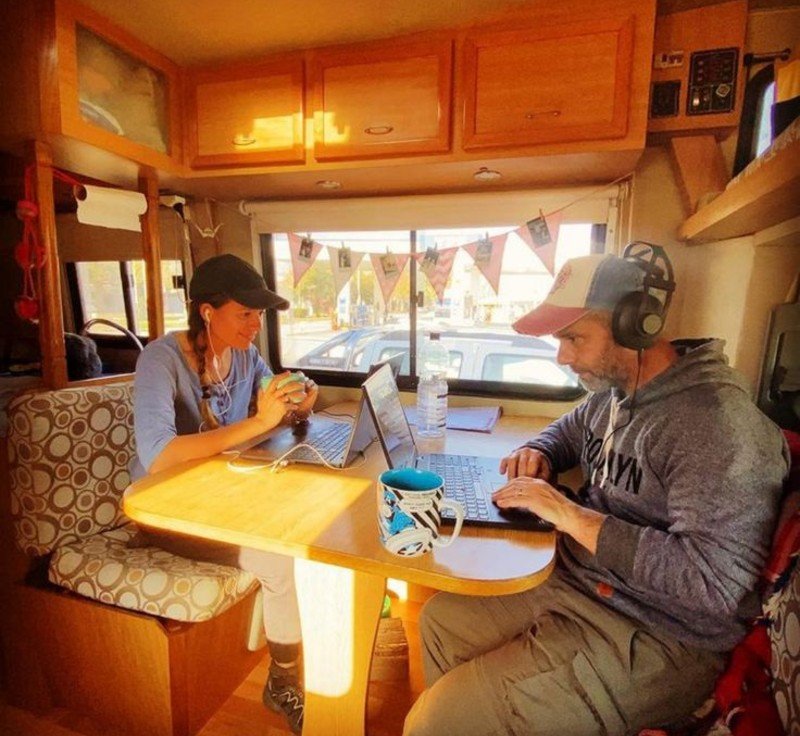
High altitude inspiration meets high-speed internet. The mile-high city has built infrastructure that works even when mountain weather doesn’t cooperate.
Denver’s tech boom created redundant internet systems throughout the metro area. Mountain proximity doesn’t sacrifice connectivity. Strong remote work culture citywide.
Van camping: Chatfield State Park offers RV sites for $28/night with electric hookups, 30 minutes from downtown. Cherry Creek State Park provides similar amenities for $32/night. Some areas allow 14-day dispersed camping.
Workspaces: Multiple Regus and WeWork locations offer day passes for $25-35. Avanti Food & Beverage has excellent wifi and all-day laptop policies. Denver Public Library branches provide free high-speed internet access.
Costs: Budget $900-1,400 monthly. Camping runs $25-35/night. Food costs stay reasonable except in tourist areas. Gas prices typically match national averages.
Community: Denver Digital Nomads has 2,500+ members with regular meetups. Large van life community due to outdoor recreation access. City government generally supports alternative housing arrangements.
Best time: May-September for best weather and road access. Winter brings snow and potential internet outages in mountain areas. Spring and fall offer good weather with fewer crowds.
Each location requires research before you arrive. Internet speeds change. Campground availability shifts seasonally. Local Facebook groups and recent van life blogs provide the most current information.
Top 5 International Van Life Destinations for Digital Nomads
Working from another country sounds amazing until you hit visa walls and internet dead zones. These five destinations welcome remote workers and offer the infrastructure you need to keep your job while exploring new places.
i. Portugal (Algarve Coast)
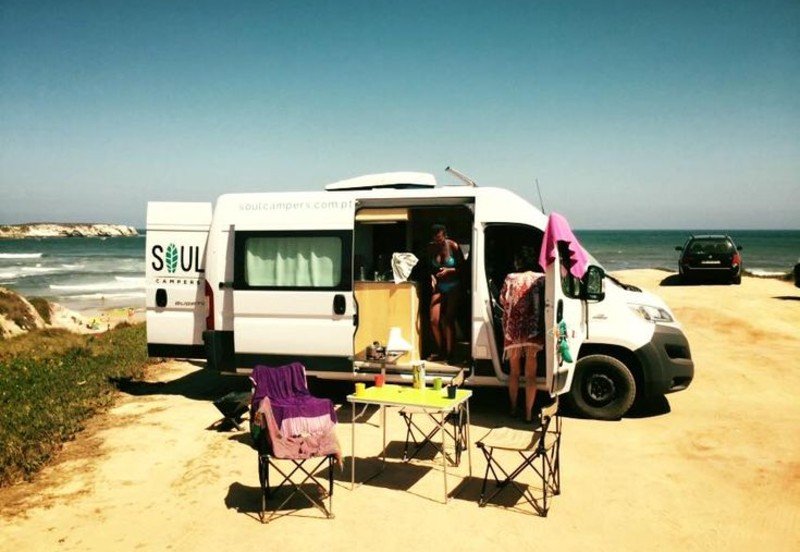
Your American salary goes further while you work from European beaches. Portugal built a digital nomad program that works.
Portugal’s D7 visa lets you stay for years, not months. The Algarve coast has fiber internet in most towns. Beach towns like Lagos and Sagres offer 50+ Mbps speeds in cafes and coworking spaces.
Van camping: Wild camping is technically illegal, but widely tolerated outside peak summer months. Many locals rent private land for €10-15/night. Official campsites cost €15-25/night with full hookups. Apps like Park4Night show van-friendly spots.
Workspaces: Outsite Lagos offers monthly memberships for €200. Cafe culture embraces laptop workers. Most towns have at least one coworking space. The library’s Wi-Fi works as a backup.
Visa requirements: D7 visa requires proof of €705/month income and a Portuguese bank account. Process takes 2-4 months. You can import your van duty-free if you become a resident.
Costs: Budget €800-1,200 monthly. Food costs 30-40% less than U.S. prices. Gas runs about €1.50/liter. Internet and phone plans cost €30-50/month.
Community: Large expat and digital nomad communities. The Lagos Digital Nomads Facebook group has 1,500+ members. Regular meetups and networking events.
Best time: September-May. Summer brings crowds and 40°C+ temperatures. Winter stays mild at 15-20°C but can be rainy.
ii. New Zealand (South Island)
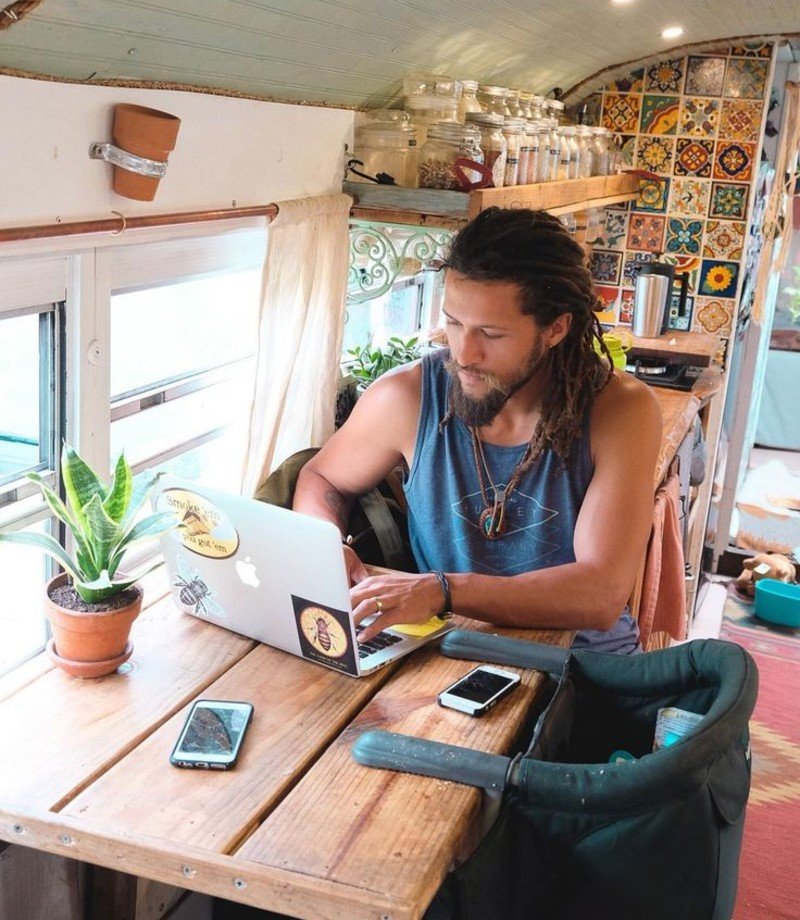
Freedom camping laws make van life legal, and internet coverage surprises most visitors. Your U.S. dollar stretches reasonably far outside main cities.
Freedom camping is legal in designated areas. Most towns have decent internet speeds. Starlink works well throughout the South Island. The culture respects van lifers who follow the rules.
Van camping: Self-contained vans can camp free in 3,000+ designated spots. Non-self-contained vans must use holiday parks for NZ$35-50/night. Apps like CamperMate and iOverlander show legal camping spots.
Workspaces: Christchurch and Queenstown have multiple coworking spaces. Most libraries offer free wifi. Coffee shops generally welcome laptop users. Small towns often have decent cafe wifi.
Visa requirements: Working Holiday Visa available for Americans under 31. Lasts 12 months. Tourist visas allow 90 days but restrict work activities. Van imports face strict biosecurity rules.
Costs: Plan for NZ$2,000-3,000 monthly (US$1,200-1,800). Food costs 20-30% more than U.S. prices. Gas runs NZ$2.50+/liter. Van rentals cost NZ$100-200/day for basic models.
Community: Active van life community shares camping tips and work opportunities. Facebook groups organize meetups. Kiwis are generally friendly to responsible van lifers.
Best time: November-March for the warmest weather. April-October brings cold and occasional snow to mountain areas. Some roads close in winter.
iii. Iceland (Ring Road)
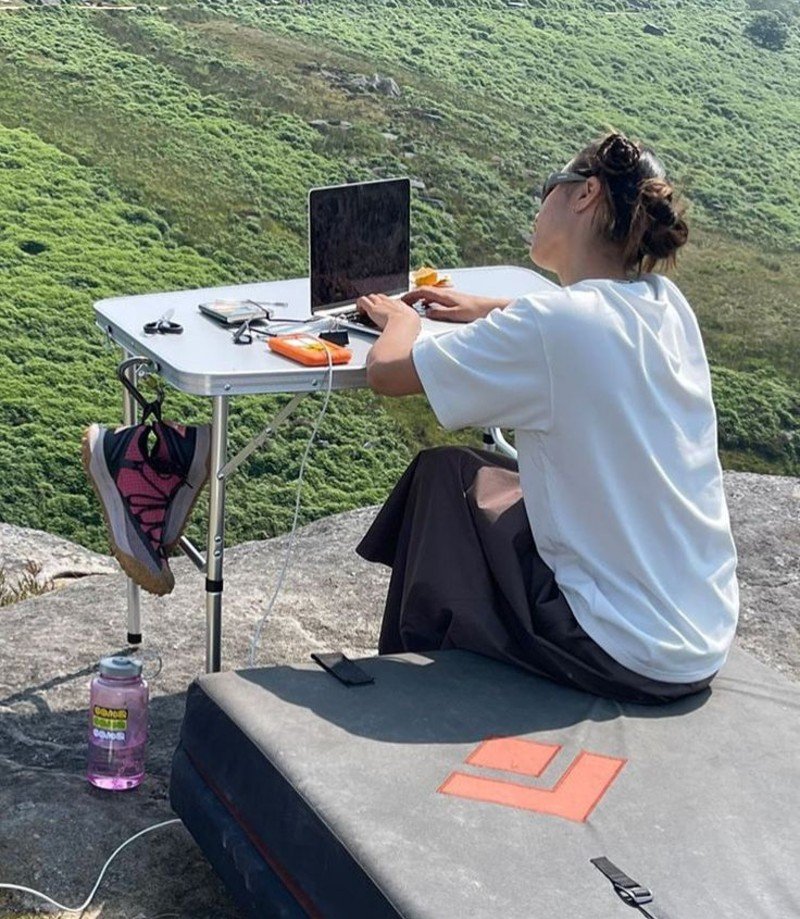
Expensive but unforgettable. Iceland offers developed infrastructure in an alien landscape. Your internet works better than in many U.S. rural areas.
Excellent internet coverage even in remote areas. Ring Road infrastructure supports van travel year-round. A small population means less competition for camping spots and wifi bandwidth.
Van camping: Wild camping is legal on public land away from farms and protected areas. Official campsites cost 2,000-3,500 ISK/night (US$15-25). Many have heated facilities and reliable internet.
Workspaces: Reykjavik has several coworking spaces. Most towns have cafes with good wifi. Public libraries provide free internet access. Mobile hotspots work well with local carriers.
Visa requirements: Americans get a 90-day tourist visa on arrival. No work permit needed for U.S.-based remote work. Van rental makes more sense than shipping unless staying 6+ months.
Costs: Budget US$2,500-4,000 monthly. Everything costs 50-100% more than U.S. prices. Gas runs US$6-8/gallon. Van rentals start at US$100/day for basic models.
Community: Small but active expat community. Digital nomads often connect through Reykjavik coworking spaces. Local Facebook groups share travel conditions and camping tips.
Best time: May-September for the best road conditions. Winter brings extreme weather and limited daylight. Some highland roads are closed from October to May.
iv. Australia (East Coast)

Working holiday visas let you earn local income while exploring. The East Coast offers consistent infrastructure and an established van life culture.
Working holiday visas allow local employment and remote work. Major cities have excellent internet. Even small coastal towns usually offer decent connectivity. Van life is culturally accepted.
Van camping: Free camping is available in many areas outside national parks. Powered sites at caravan parks cost AU$30-50/night. Apps like Wikicamps show thousands of van-friendly locations.
Workspaces: Brisbane, Sydney, and Melbourne have numerous coworking spaces. Coastal towns often have co-working cafes. Libraries provide free wifi backup. Internet cafes still exist in tourist areas.
Visa requirements: Working Holiday Visa (subclass 417) available for Americans 18-30. Allows a 12-month stay with the option to extend. Can work up to 6 months with any employer.
Costs: Budget AU$2,000-3,500 monthly (US$1,300-2,300). Food costs are similar to U.S. prices. Gas runs AU$1.50-2.00/liter. Van purchases are possible but require local registration.
Community: Huge backpacker and van life community. Facebook groups organize meetups and share job opportunities. Easy to find travel companions and work connections.
Best time: Year-round on the East Coast. Northern areas are best from April to September (dry season). Southern areas are better from October to March (summer).
v. Canada (British Columbia)

Natural beauty meets tech infrastructure. Vancouver’s proximity provides urban amenities, while the mountains offer adventure.
Strong internet coverage throughout populated areas. Cultural similarities make adjustment easier. The van life community is well-established and supported.
Van camping: Provincial parks offer sites for CAD$20-35/night. Free camping is available on Crown land with restrictions. Many Walmart locations allow overnight parking.
Workspaces: Vancouver and Victoria have extensive coworking options. Smaller towns often have library wifi and laptop-friendly cafes. Tim Hortons locations provide reliable backup internet.
Visa requirements: Americans can visit for 6 months without a visa. Work permits are required for Canadian employment. Remote work for U.S. companies is generally allowed on a tourist visa.
Costs: Budget CAD$1,500-2,500 monthly (US$1,100-1,850). Food costs are similar to northern U.S. cities. Gas runs CAD$1.40-1.70/liter. Healthcare is not covered for tourists.
Community: Active van life groups share routes and camping spots. Digital nomad meetups in Vancouver and Victoria. Canadians are generally welcoming to American van lifers.
Best time: May-September for best weather and road access. Winter brings snow and potential road closures in mountain areas.
Each destination requires careful planning and research. Visa rules change frequently. Internet coverage maps update seasonally. Join local Facebook groups before you go to get current information from people living this lifestyle.
Top 5 Emerging Van Life Destinations for 2025
Everyone’s hitting the same overcrowded spots. You want somewhere new before Instagram ruins it. These five destinations are building the infrastructure you need while staying off most people’s radar.
i. Albania (Balkan Coast)

Europe’s best-kept secret just got fiber internet. The Albanian coast offers Mediterranean vibes at Balkan prices.
Why it’s emerging: Albania upgraded its internet infrastructure for EU membership talks. Coastal towns now offer 50+ Mbps speeds. The government actively promotes digital nomads to boost tourism revenue.
Van camping: Wild camping is legal on public beaches outside protected areas. Coastal campsites cost €8-15/night. Local farmers often rent parking spots for €5 5/night.
Work setup: Tirana and coastal towns like Saranda have new coworking spaces. Most cafes offer decent wifi. Mobile data costs €10-20/month for unlimited plans.
Visa situation: Americans get 90 90-day visa-free. Albania plans to launch a digital nomad visa program in 2025. Remote work for foreign companies is currently allowed on a tourist visa.
Costs: Budget €500-800 monthly. Food costs 60-70% less than in Western Europe. Gas runs €1.20/liter. Van insurance costs €200-400 annually.
Community: Growing expat population in Tirana and coastal areas. New Facebook groups are forming as more nomads discover the area.
ii. Mexico (Baja Peninsula)
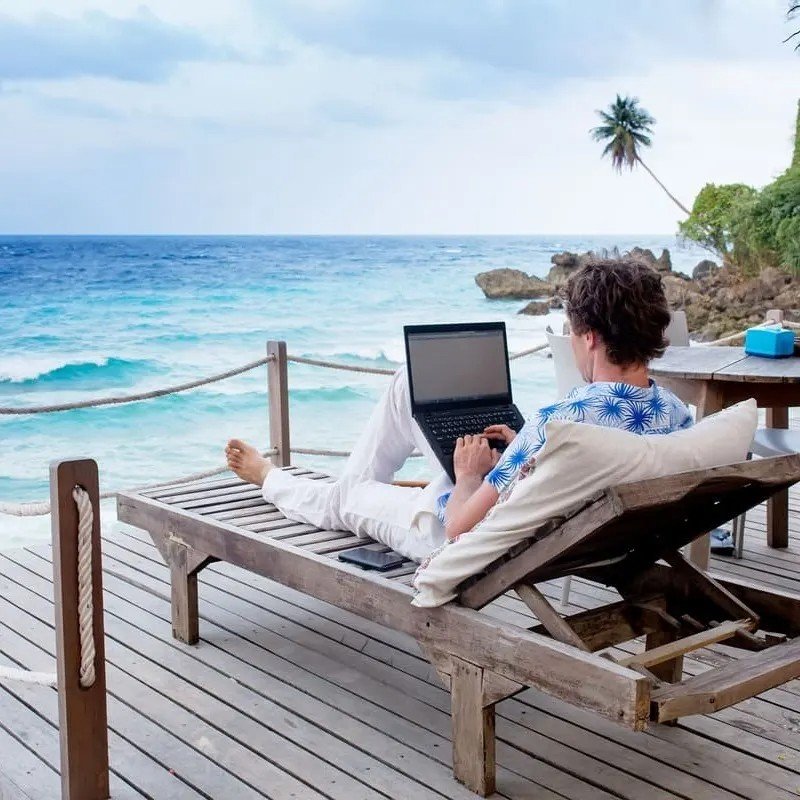
Baja is getting serious about digital nomads. New infrastructure projects target remote workers specifically.
Why it’s emerging: Mexico launched a digital nomad visa program in 2024. Baja Peninsula gets priority for fiber internet expansion. Starlink coverage is excellent throughout the region.
Van camping: Beach camping is widely accepted with local permissions. Formal campgrounds cost $15-25 USD/night. Many towns offer monthly RV parking for $200-400.
Work setup: Ensenada and La Paz have new coworking spaces. Most tourist areas offer 25+ Mbps speeds. Backup internet through Starlink or Mexican cellular works well.
Visa situation: The Digital Nomad visa requires $1,685 USD monthly income proof. Tourist visas allow 180 days for remote work. Vehicle permits are needed for stays over 72 hours.
Costs: Budget $800-1,200 USD monthly. Food costs 50-60% less than U.S. prices. Gas runs $4-5 USD/gallon. Mexican auto insurance is required and costs $200-500 annually.
Community: Established expat communities in major towns. Growing van life groups share border crossing tips and camping spots.
iii. Tasmania, Australia

Tasmania’s government actively recruits remote workers. The island offers Australia’s benefits with fewer crowds and lower costs.
Why it’s emerging: Tasmania’s “Come South” campaign targets digital nomads. Major infrastructure upgrades bring fiber internet to rural areas. The state promotes van life tourism.
Van camping: Free camping is allowed in many areas outside national parks. Powered sites cost AU$25-35/night. Apps like Wikicamps show hundreds of locations.
Work setup: Hobart and Launceston have expanding coworking scenes. Even small towns usually offer decent cafe wifi. Mobile coverage has improved significantly in recent years.
Visa situation: Same as mainland Australia – Working Holiday Visa for Americans under 31. Tourist visas allow remote work for foreign companies.
Costs: Budget AU$1,500-2,200 monthly (US$1,000-1,450). Food costs 10-20% less than in mainland Australia. The ferry from Melbourne costs AU$200-400 with a van.
Community: Smaller but tight-knit van life community. Local Facebook groups are very active and helpful to newcomers.
iv. Scotland (NC500 Route)
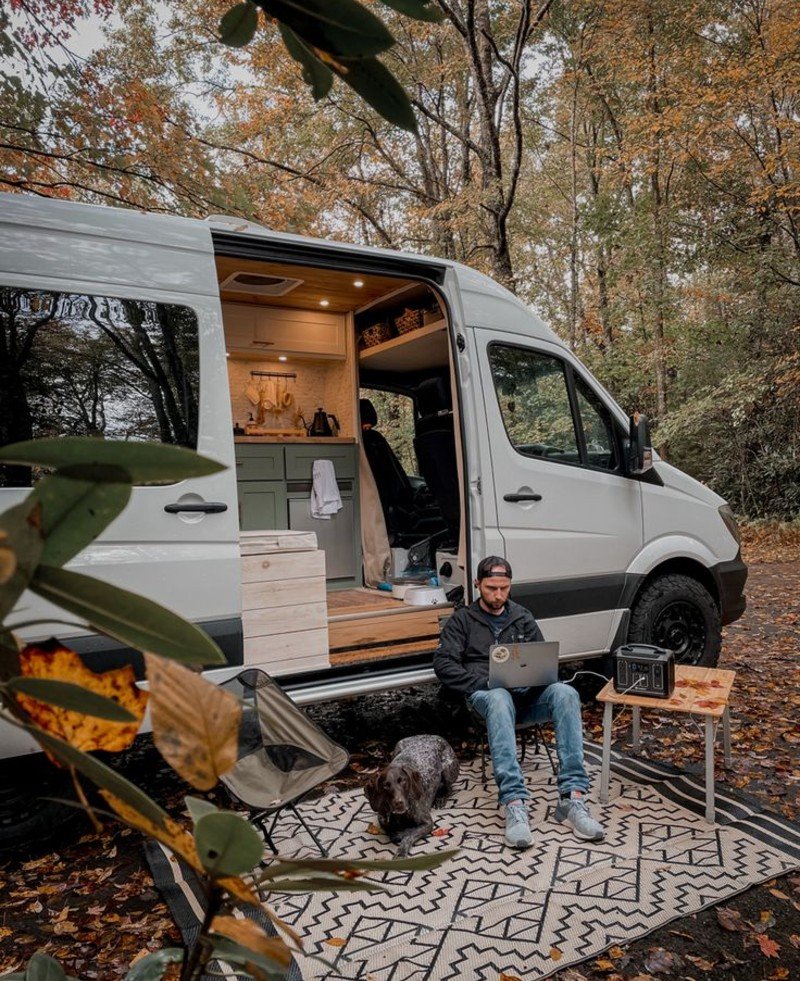
Scotland upgraded rural internet for post-Brexit tourism. The North Coast 500 route now offers reliable connectivity in stunning landscapes.
Why it’s emerging: The Scottish government invested heavily in rural broadband. 5G towers installed along popular tourist routes. Wild camping laws support van life culture.
Van camping: Wild camping is legal almost everywhere. Campsites cost £15-25/night. Many distilleries and farms offer parking for small fees.
Work setup: Even remote villages often have decent internet now. Coworking spaces opening in Inverness and other route towns. Public Wi-Fi is improving rapidly.
Visa situation: Americans get 6 6-month visa-free. Post-Brexit rules allow remote work for non-UK companies. Vehicle insurance and registration are straightforward.
Costs: Budget £800-1,200 monthly (US$1,000-1,500). Food costs are similar to U.S. prices. Gas is expensive at £1.40+/liter. Vehicle insurance costs £300-600 annually.
Community: A Growing international van life community. Local groups are very welcoming and share weather/road condition updates.
v. Chile (Patagonia Region)
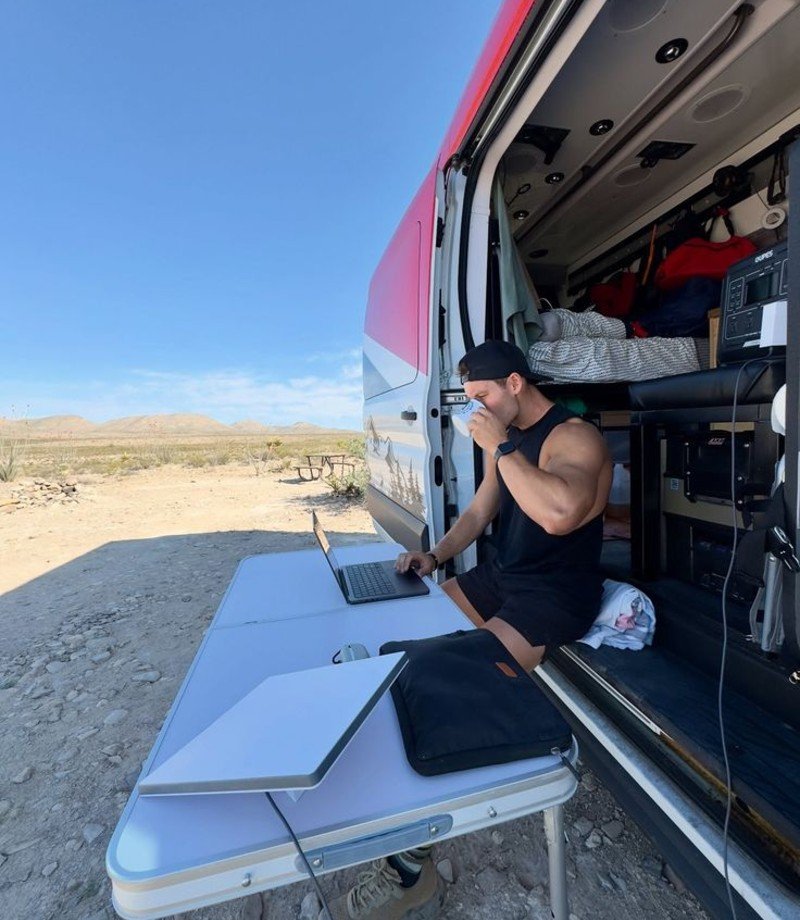
Chile targets digital nomads with new visa programs and infrastructure investments. Patagonia offers dramatic landscapes with improved connectivity.
Why it’s emerging: Chile’s new digital nomad visa launches fully in 2025. The government is investing in Patagonia’s internet infrastructure. Growing tech scene in Puerto Montt and Punta Arenas.
Van camping: Wild camping is allowed in most areas outside national parks. Campsites cost $10-20 USD/night. Estancias often allow parking for small fees.
Work setup: Major towns have coworking spaces. Starlink coverage is excellent throughout the region. Mobile data is affordable at $20-30 USD/month.
Visa situation: The New digital nomad visa requires $2,000 USD monthly income proof. Tourist visas currently allow 90 days. Vehicle imports are possible but complex.
Costs: Budget $600-1,000 USD monthly. Food costs vary widely by location. Gas is expensive at $4-6 USD/gallon. Consider flying in and renting locally.
Community: Small but passionate international community. Santiago-based nomad groups organize Patagonia trips.
Essential Tech Setup for Van Life Digital Nomads
Your tech setup can make or break your remote work dreams. One internet outage or dead battery could cost you a client or a deadline. Here’s what works when your office runs on 12 volts and moves daily.
i. Internet: Your Lifeline
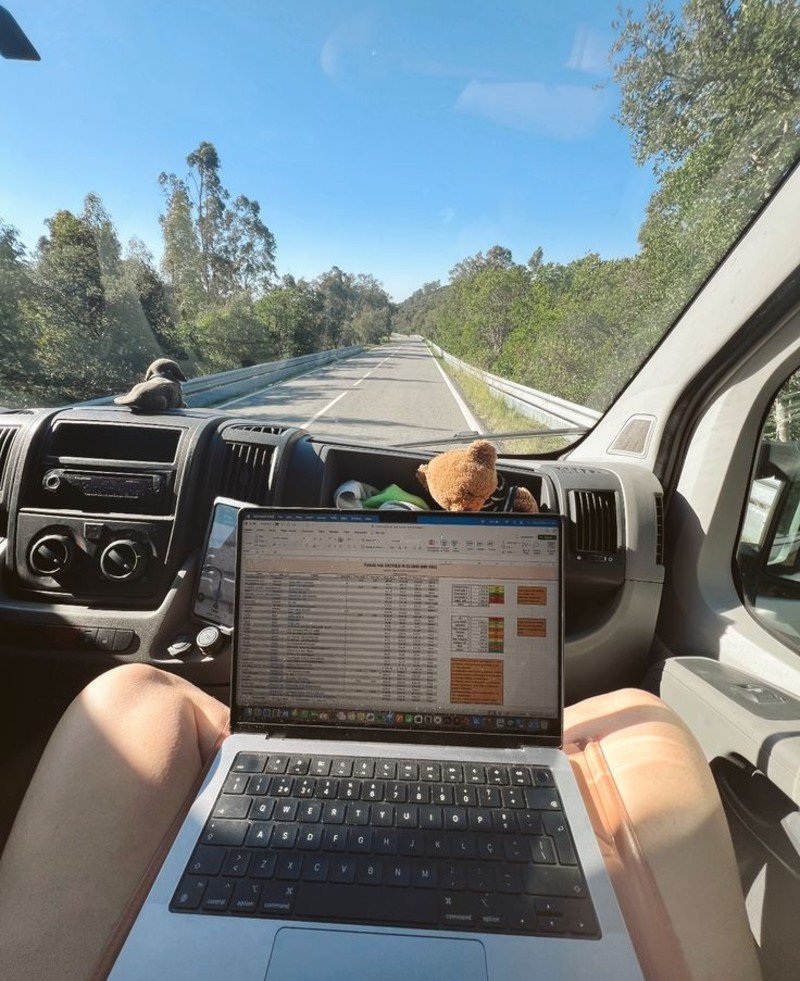
Starlink is your best friend. It works in most remote areas where cell towers fail. Current pricing runs $120/month for residential service, $250/month for mobile plans. Coverage maps show availability in over 70 countries, but check specific routes before you go.
Cellular hotspots as backup. Get plans from multiple carriers. Verizon often works best in rural U.S. areas. T-Mobile excels in cities. AT&T fills gaps the others miss. Unlimited plans cost $50-80/month each, but data speeds drop after 50-100GB.
Signal boosters help weak signals. WeBoost Drive Reach costs around $500 but can double your signal strength. Only works if there’s some signal to boost; won’t create miracles in dead zones.
ii. Power Keep Everything Running
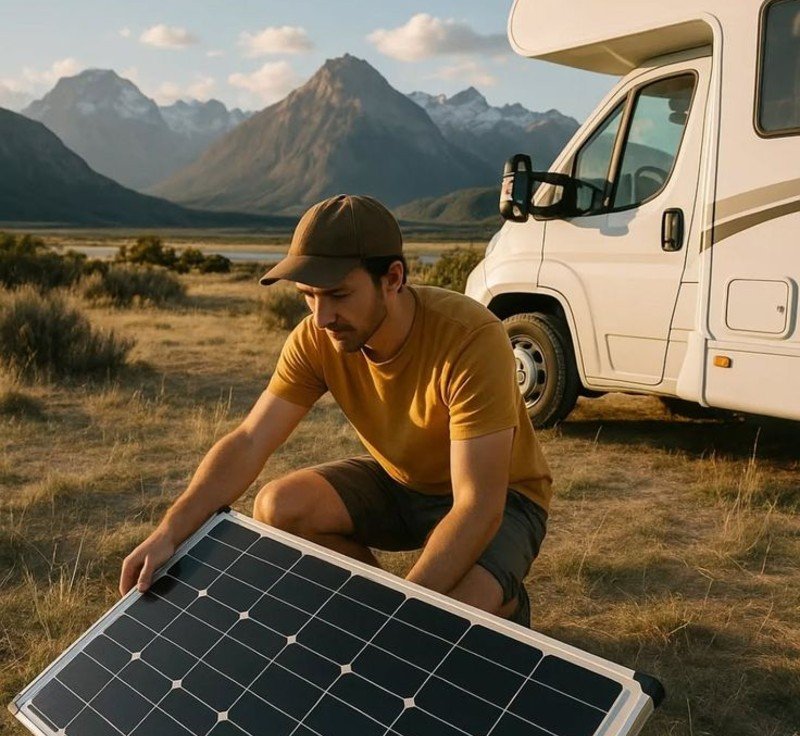
Solar panel size matters. You need 400-800 watts for reliable laptop charging and internet equipment. Figure 200 watts per 100 amp-hours of daily battery usage. Renogy and Goal Zero offer proven van-specific kits.
Lithium batteries last longer. Plan for 400-800 amp-hours of lithium battery capacity. They charge faster and handle more cycles than lead-acid batteries. Budget $2,000-4,000 for a solid battery bank.
Inverters convert 12V to 120V. Get pure sine wave inverters for sensitive electronics. 2,000-3,000 watts handles most laptop and monitor setups. Cheap modified sine wave inverters can damage equipment.
iii. Mobile Office Setup
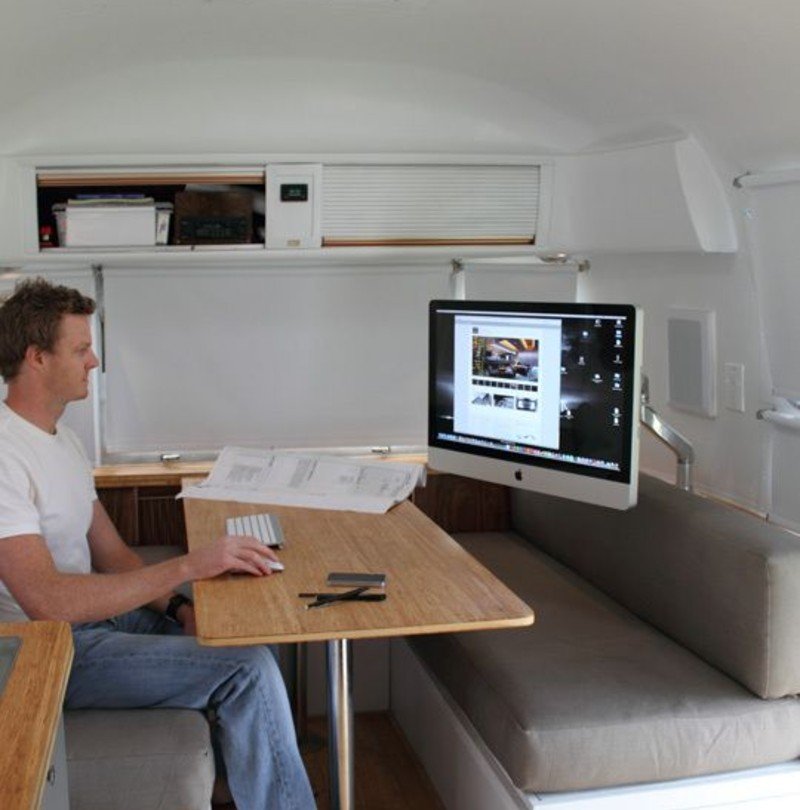
Ergonomics prevents pain. Your laptop screen should be at eye level. External keyboards and mice prevent repetitive strain injuries. A separate monitor boosts productivity but drains more power.
Desk space needs planning. Fold-down desks save space but limit storage. Fixed desks offer stability for multiple monitors. Consider a swivel chair that doubles as your driver’s seat.
Climate control affects performance. Laptops overheat in hot vans. Roof vents and fans prevent thermal throttling. Humidity damages electronics – use moisture absorbers in coastal areas.
iv. Backup Plans Save Jobs
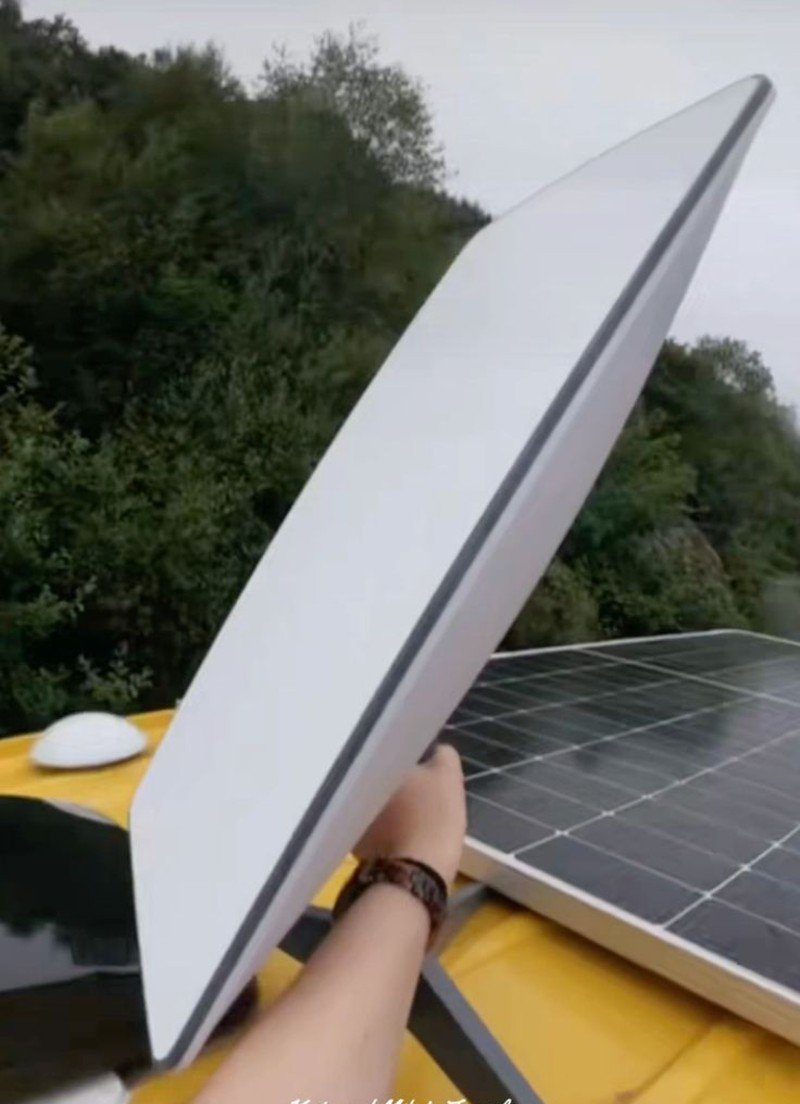
Multiple internet sources. Starlink, two cellular carriers, and local wifi create four backup options. Test each monthly to catch problems early.
Offline work capability. Download files and sync cloud documents when connected. Git repositories, offline editing tools, and cached websites let you work during outages.
Power redundancy matters. Solar, alternator charging, and shore power provide three charging methods. Portable battery banks offer emergency laptop power for 4-6 hours.
Equipment spares prevent disasters. Carry backup cables, chargers, and a spare laptop if possible. Small electronics fail more often than you’d expect on the road.
Budget Breakdown: Costs of Van Life Digital Nomadism
Van life looks cheap on Instagram until you add up the real numbers. Here’s what this lifestyle costs, so you can budget properly and avoid financial surprises.
i. Monthly Living Costs by Region
U.S. Budget Destinations: $800-1,200/month
i. Camping: $15-25/night ($450-750/month)
ii. Gas: $200-400/month, depending on movement
iii. Food: $300-500/month
iv. Internet/phone: $100-200/month
U.S. Expensive Areas: $1,500-2,500/month
i. Camping: $40-60/night ($1,200-1,800/month)
ii. Gas: $300-500/month
iii. Food: $400-700/month
iv. Parking permits and fees add $200-400/month
International Budget Countries: $600-1,000/month
i. Camping: $5-15/night ($150-450/month)
ii. Gas: $150-300/month
iii. Food: $200-400/month
iv. Visas and permits: $50-150/month
International Expensive Countries: $2,000-4,000/month
i. Camping: $30-50/night ($900-1,500/month)
ii. Gas: $400-800/month
iii. Food: $500-1,000/month
iv. Higher insurance and permit costs
ii. Van Setup Costs for Remote Work
Basic Work Setup: $3,000-6,000
i. Solar system: $1,500-3,000
ii. Battery bank: $800-2,000
iii. Internet equipment: $500-1,000
iv. Basic desk and ergonomic setup: $200-500
Professional Setup: $8,000-15,000
i. Advanced solar and power system: $4,000-8,000
ii. Starlink and multiple internet backups: $1,000-2,000
iii. Professional office setup with monitors: $1,000-2,500
iv. Climate control for electronics: $500-1,500
iii. Visa and Permit Fees
Digital Nomad Visas: $300-2,000 per application
i. Portugal D7: €532 plus documentation costs
ii. Mexico: $500-800, depending on income requirements
iii. Processing takes 2-6 months and often requires deposits
Vehicle Permits: $50-500 per country
i. Temporary import permits for international travel
ii. Carnet de Passage costs $5,000-15,000 deposit for some regions
iii. Border crossing fees add $20-100 per crossing
iv. Insurance Reality Check
U.S. Van Insurance: $1,200-3,000/year
i. Full-time RV policies cost more than regular auto insurance
ii. Coverage varies significantly between states
iii. Some insurers refuse to cover converted vans
International Insurance: $500-2,000/year per country
i. Required in most countries before entry
ii. Coverage limits often lower than U.S. standards
iii. Medical evacuation insurance adds $300-800/year
Health Insurance: $200-800/month
i. Travel insurance is insufficient for long-term nomads
ii. International health plans cost more than domestic coverage
iii. Many policies exclude van life activities
Legal Considerations and Visa Requirements
Getting legal stuff wrong can end your van life dream fast. One visa violation or tax mistake could cost thousands in fines or get you banned from countries. Here’s what you need to know to stay legal and keep working.
i. Tax Rules Follow You Everywhere

U.S. citizens pay taxes on worldwide income. Your location doesn’t matter; the IRS wants its cut. You’ll likely owe taxes in your home state, too, unless you establish residency elsewhere.
Foreign Earned Income Exclusion helps. If you qualify, you can exclude up to $120,000 of foreign income from U.S. taxes in 2025. You must be outside the U.S. for 330 days in 12 months.
Track your days carefully. Apps like TaxGPS help you prove where you worked each day. Immigration stamps aren’t enough – you need detailed location records.
ii. Visa Requirements Vary Wildly
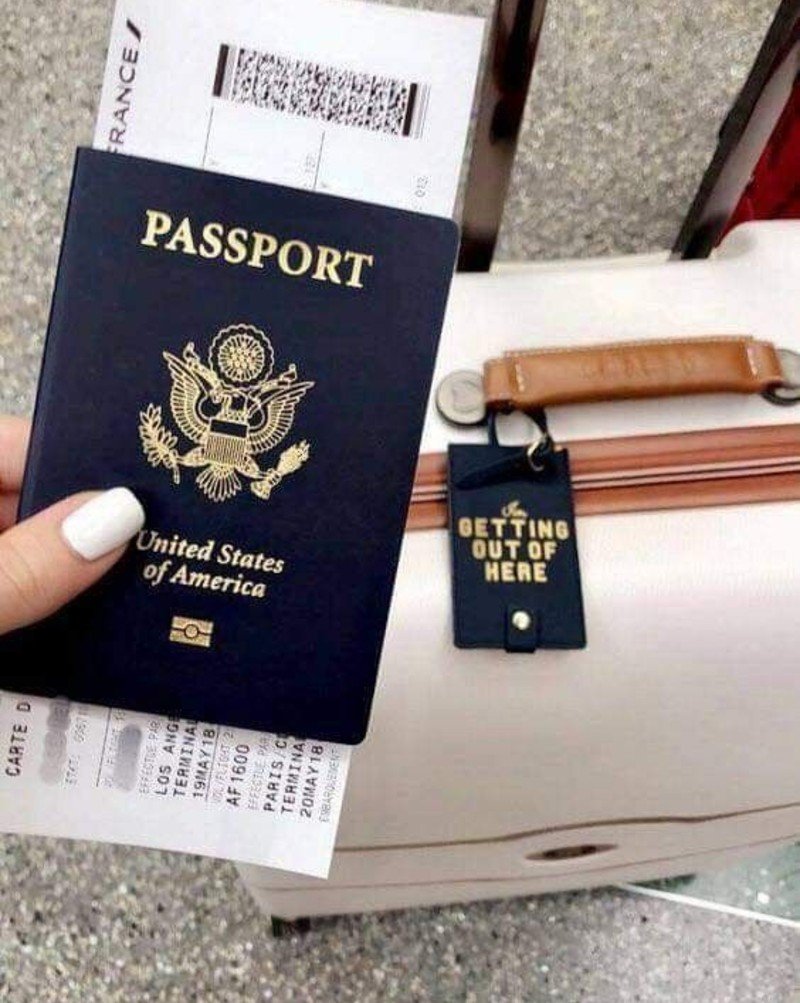
Tourist visas usually allow remote work for foreign companies. Working for local companies typically requires work permits. Digital nomad visas are becoming common, but often require $2,000+ monthly income proof.
Popular visa options:
i. Portugal D7: Long-term residency path, requires €705/month income
ii. Mexico digital nomad visa: $1,685/month income requirement
iii. Estonia digital nomad visa: €3,500/month for one year
Overstaying has serious consequences. Bans can last 3-10 years. Some countries share violation data, affecting future travel.
iii. Vehicle Legal Requirements

International Driving Permits are required in most countries. Get yours before you leave; you can’t apply from abroad. They’re valid for one year and cost $20 from AAA.
Vehicle insurance must meet local minimums. Your U.S. policy likely won’t work abroad. European coverage costs €500-1,500 annually. Some countries require insurance before entry.
Temporary import permits allow vehicle entry. Duration varies from 30 days to one year. Carnet de Passage documents may be required for some regions, requiring $5,000-15,000 deposits.
FAQs
What internet speed do I need for remote work in a van?
You need at least 25 Mbps download speed for video calls and cloud-based work. Upload speeds matter too; aim for 5+ Mbps for video meetings. Most destinations in our list offer 50+ Mbps in towns and coworking spaces.
How much does van life digital nomadism cost per month?
Budget $1,500-3,000/month for realistic van life digital nomadism. U.S. budget destinations run $800-1,200/month. Expensive areas like San Diego or Iceland cost $2,500-4,000/month. International budget countries like Albania run $600-1,000/month.
Can I legally work remotely while traveling internationally?
Yes, but rules vary by country. Most tourist visas allow remote work for your home country employer. You usually can’t take local clients or jobs without work permits.
What essential equipment do I need to work remotely from a van?
You need reliable internet, adequate power, and a functional workspace. For internet: Starlink ($120-250/month) plus cellular hotspots from 2-3 carriers ($50-80/month each). For power: 400-800 watts of solar panels and 400-800 amp-hours of lithium batteries ($4,000-8,000 total).
